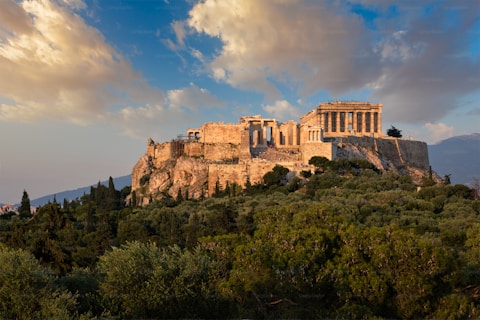The Jewish Museum of Greece

As a historical and ethnographic museum, it has over 7500 original artifacts, photographs, costumes, documents and archives that highlight the history, domestic and religious life of the Greek Jews. The museum’s 800 sq.m. houses its permanent exhibition, rooms for temporary exhibits, a contemporary Art Gallery, an educational programme area, a library, the photographic archive and laboratory, a conservation unit, video viewing rooms, rest room and sales shop. The permanent exhibit is organized according to thematic units on different levels around the central axis of the octagonal skylight.
On the lower level, there is the exhibit of the reconstructed interior of the old Romaniote ( as the Greek Jews were referred to) Synagogue of the Jewish Community of Patras, which the Jewish Museum of Greece acquired after it was leveled in 1979. There are also artifacts of synagogal liturgy from both the Romaniote and Sephardic tradition. Of special interest are the Sepher Torah scrolls kept in wooden cases called Tik (from the Greek Thiki or case), the Parochet or curtain that conceals the Ehal or Aron ha Kadesh or Holy Ark, and embroidered textiles.
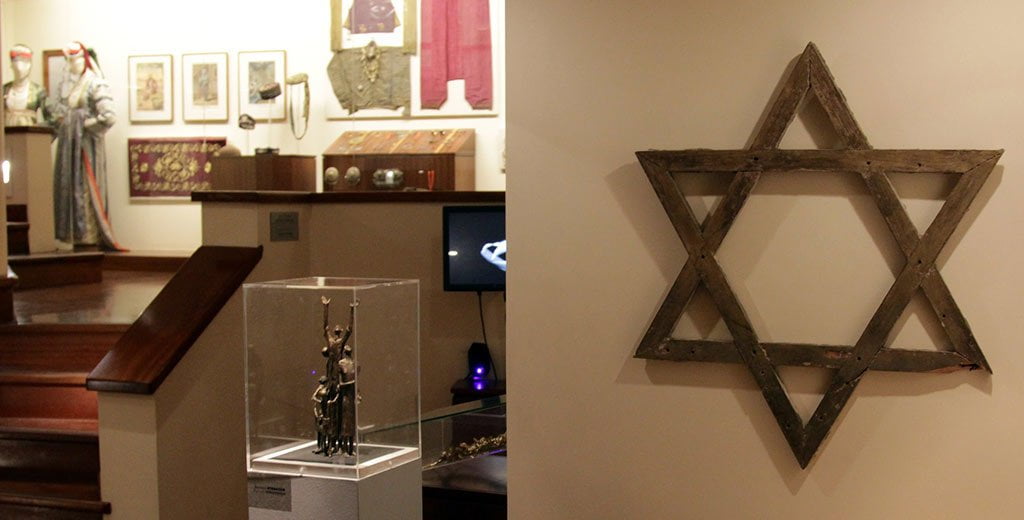
The Jewish Museum of Greece Photo Credit: Tilemahos Efthimiadis
The next levels highlight the cycle of the Jewish Holidays, starting with the Sabbath(Saturday), a holy day reserved for rest, and exhibits include Hanukkiyot or 8 branched candelabra lighted during Hannukah, Novias traditional sweets for the Purim holiday, the special tray for Seder or Jewish Passover and the Shofar, a ritual trumpet made from a ram’s horn.
The next stage features the history of the Greek Jews dating from the 3rd century BCE until the 20th Century, as presented in historical documents, inscriptions and books. Military uniforms and memorabilia attest to the Greek Jews’ contribution to the Greek War of Independence as well as the role of the Greek Jews in the Zionist movement.
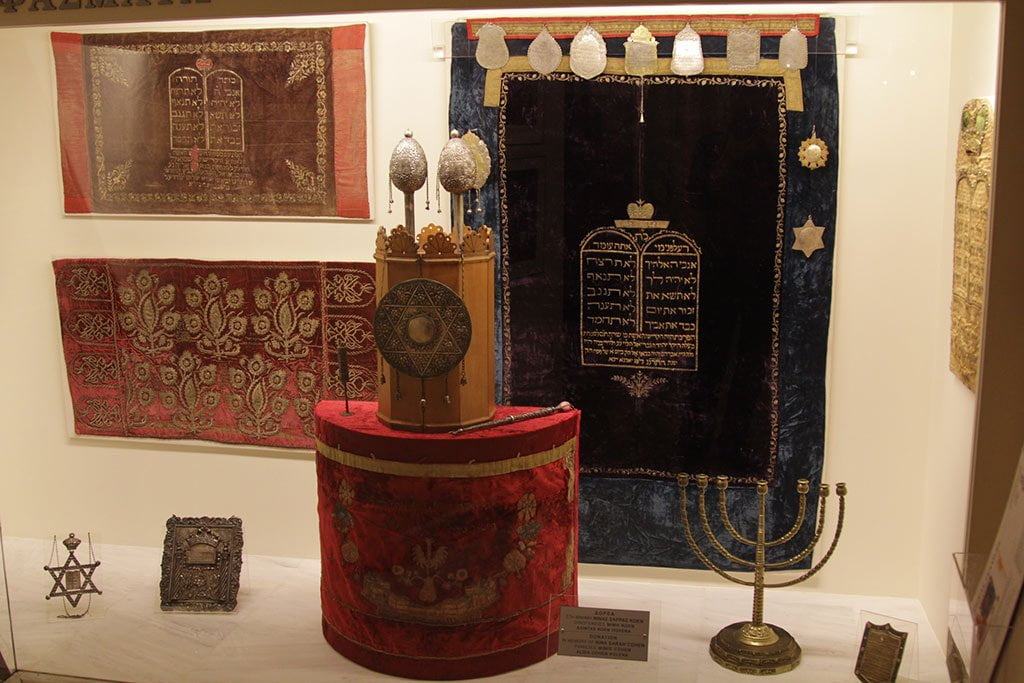
The Jewish Museum of Greece Photo Credit: Tilemahos Efthimiadis
The 5th level is dedicated to the Holocaust or Shoah . Prisoner clothes from the concentration camps, photographs, bonds, valuables, currency and personal jewelry belonging to those sent to the extermination camps underline the extent of the decimation of the Jewish population of Greece.
The next level is dedicated to traditional costumes from the 18th and 19th century where the costumes of women were varied and incorporated regional influences from traditional Greek dress. Silk waist coats, gold brocade coat dress, belt buckles, hats, jewels, embroidered shoes eventually gave way to simpler, more modern wear by the 20th century.
On towards the last levels is the exhibition of the Cycle of Life, where the everyday life and important stages of the Jews of Greece is depicted through the display of traditional items for domestic ritual. Birth, circumcision, marriage, coming of age, domestic life and death are presented through clothes, embroideries, tools, ivory combs, bath clogs, amulets and other religious and personal items.
The Ben Rubi Art Gallery displaying rabbinical robes is the last level open to the visitor. There is also the exhibit of photographs and testimonies of the Metropolitans and Chief Rabbis in the face of the Holocaust in Greece, describing the risks taken by each in different cities of Greece. The Library which is at the top level and numbers approximately 3500 books is not open to the public, but is available for research and study through direct application.
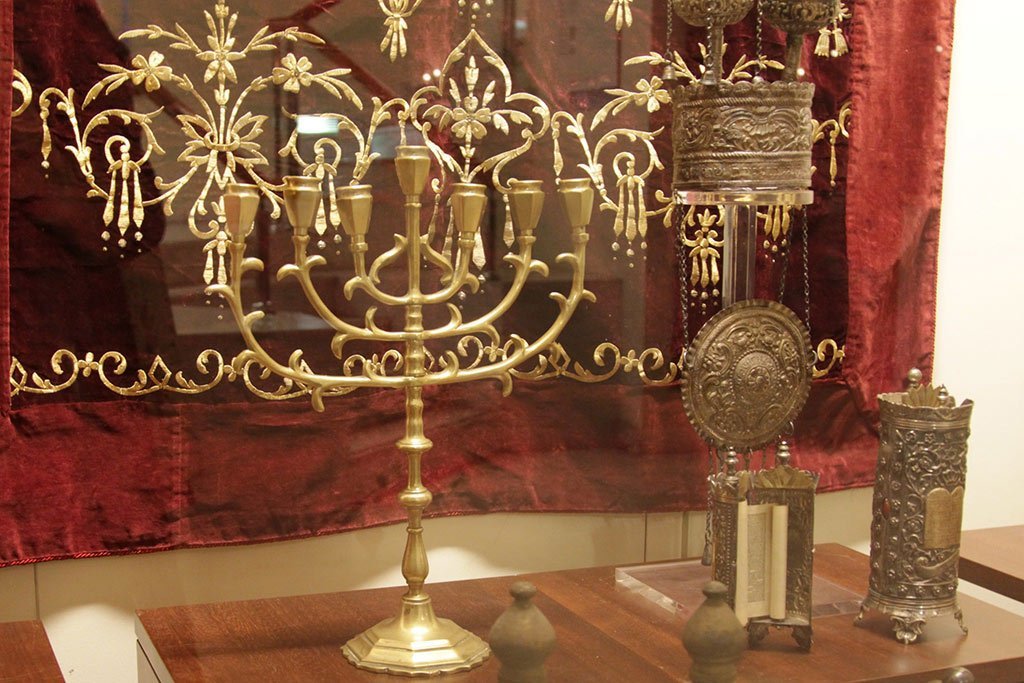
Hanukkah Lamp Photo Credit: Tilemahos Efthimiadis
In addition to its exhibits, the museum gives great importance to its educational programs, available to people visiting either privately or in groups. Its aim is to help engender an understanding of the cultural heritage, history and traditions of the Greek Jews as well as promoting an intercultural approach. As someone expressed it, its aim is to “become a museum- school and not a museum-archive,” emphasizing a dynamic and active approach.
The museum receives approximately 10-12,000 visitors each year, both from Greece and abroad.
The museum is open Monday to Friday, 09:00-14:30, Sundays:10:00-14:00. Saturdays: Sabbath: Closed
Cover Photo Credit: Tilemahos Efthimiadis
Feeling Ready?
From our blog
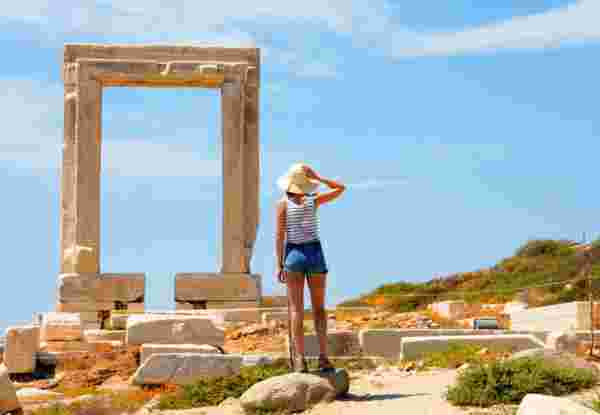
Honeymoon in Naxos: A Complete Guide
READ MORE
Visiting Athens with Kids: A helpful Guide
READ MORE
Paros for Seniors: Tips and Itinerary
READ MORE
Best Resorts in Greece for Families: Your Ultimate 2025 Guide
READ MORE
How to Enjoy Santorini for Seniors
READ MORE
Honeymoon in Paros Island
READ MORE
Rome Travel Guide: What to Do, When to go and Where to Go
READ MORE
The Best Greek Islands for Couples, According to a Luxury DMC
READ MORE
Discover Milan: Top Attractions
READ MORE
